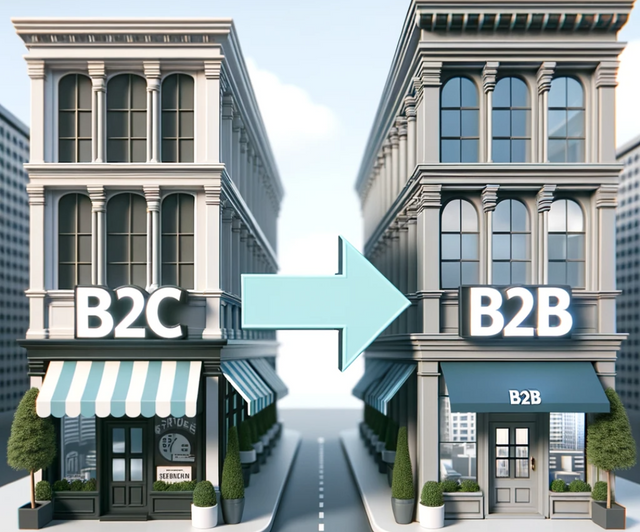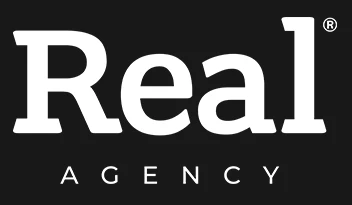Transforming from a B2C to a B2B eCommerce Store
Making the switch from a B2C to B2B eCommerce store is a significant transformation that requires careful planning and adjustments in various aspects of the business, including pricing, marketing, sales strategies and customer service. However, for many businesses, it can offer a pathway to growth, profitability and long-term sustainability.
What is B2B and B2C eCommerce?
B2B (Business-to-Business) eCommerce refers to the online buying and selling of products or services between businesses through digital platforms, whereas B2C (Business-to-Consumer) eCommerce is selling directly to individual consumers.
In the B2B model, businesses are the primary customers, engaging in transactions that often involve larger quantities, complex negotiations and customised solutions, tailored to meet specific business needs. In contrast, B2C eCommerce offers individuals a wide range of products with shorter sales cycles, fixed pricing and consumer-focused marketing to encourage instant purchases.
B2C vs B2B
There are key differences in how B2C and B2B eCommerce businesses operate and engage with their customers. We’ve listed a few below.
Approach to Customers
- B2C eCommerce typically involves direct transactions with individual consumers. It’s about reaching a broad audience and providing products or services that cater to their immediate needs and desires.
- In contrast, B2B eCommerce focuses on engaging with other businesses. It requires a more tailored approach to meet the unique requirements of business clients.
Marketing Strategies
- B2C marketing often relies on emotional triggers and consumer-oriented campaigns to encourage instant purchases.
- B2B marketing emphasises value propositions, practical solutions and targeted strategies that address specific business needs.
Customer Relations
- B2C transactions are typically transactional, with limited ongoing relationships beyond individual purchases.
- B2B eCommerce thrives on building long-term partnerships. It involves continuous collaboration and support to meet the evolving needs of business clients.
Sales Process
- B2C sales cycles are relatively short, often driven by impulse buying and the need for instant gratification.
- B2B sales can involve complex negotiations, longer decision-making processes and a focus on establishing trust and value over time. One B2B transaction will need the approval of an average of seven parties¹ and higher cost items are evaluated based on return on investment (ROI), making the purchasing cycle longer – perhaps up to a few years.²
Nature of Transactions
- B2C transactions are characterised by immediate actions and relatively smaller order sizes.
- B2B transactions typically involve larger quantities and higher order values, including wholesale.
Information vs. Emotion
- B2B consumers are information-driven. They conduct thorough research and require comprehensive product knowledge before making purchasing decisions.
- In contrast, B2C customers often make purchases based on emotional triggers and the appeal of a product.
Key Takeaway: B2C focuses on broad consumer engagement and emotional marketing, with transactional relationships, shorter sales cycles and smaller order sizes. In contrast, B2B involves tailored business client engagement, value-oriented marketing, long-term partnerships, complex sales processes, larger orders and information-driven purchasing decisions.
What are the benefits of transitioning to a B2B eCommerce store?
Access to Untapped Markets
One of the primary benefits of shifting to a B2B eCommerce model is the opportunity to tap into a new and potentially less cost-sensitive market. A B2B company’s average order value (AOV) is more than seven times that of a B2C company as business purchases often include software, equipment, technology and services for operations.² Business clients often place larger and more recurring orders, providing increased profits and a stable revenue stream that can be particularly advantageous for sustainable growth.
According to Forrester³:
- B2B eCommerce sales will double in the next 5 years – while US B2B e-commerce sales reached $1.7 trillion in 2021, a new forecast from Forrester (2022 B2B E-Commerce Forecast, US) finds that this volume is estimated to exceed $2 trillion in 2023 and $3 trillion by 2027.
- B2B eCommerce sales witnessed their highest growth ever in 2021, at 22.9% YoY
- The share of eCommerce sales will rise from 17% in 2022 to 24% in 2027
Natural Evolution of Product Upstream
For some consumer-oriented companies, especially those targeting specific niches or industries, transitioning to a B2B model can be seen as a natural evolution. It is often expected, either from the outset or as part of a long-term growth strategy, that they will eventually serve businesses. This shift upstream in the supply chain aligns with the changing needs of the market and positions the company to offer products or services that meet the requirements of other businesses.
Reduced Marketing Costs
B2C marketing can be highly competitive and expensive, especially when targeting a broad consumer audience. Transitioning to B2B may allow businesses to reduce marketing costs by focusing on a more specific and targeted group of potential clients.
Enhanced Brand Reputation
Successfully serving businesses can enhance a company’s brand reputation and credibility. Positive relationships with other businesses can lead to word-of-mouth referrals and industry recognition.
Key Takeaway: Transitioning to a B2B eCommerce store offers businesses several significant benefits, including access to potentially more profitable markets with larger and recurring orders, reduced marketing costs due to targeting a niche audience, and the potential to boost brand reputation through industry recognition.
Website Design
When it comes to website design, B2C and B2B eCommerce platforms adopt distinct strategies to cater to their respective customer bases.
Homepage Design
A B2B homepage is typically designed in a simple style. It avoids clutter and focuses on conveying professionalism. The primary goal is to provide easy access to essential information for business clients.
In contrast, B2C homepages often have an attractive and visually appealing design. Discounts, special deals and eye-catching visuals take centre stage to entice individual consumers into making a purchase.
Checkout Process
Ideally, B2B websites should feature a checkout process that combines automation and pre-programmed procedures with live human support available at any time. This hybrid approach caters to the complex, customised needs of business clients while ensuring accessibility to assistance when needed. As businesses tend to make larger orders, same-day delivery may not be possible and shipping options could include warehouse pickup and standard delivery.
The checkout process on B2C sites is relatively straightforward, quick and user-centric. Customers add products to their carts, apply discount coupons if applicable, verify the delivery address, complete the payment and receive immediate confirmation of a successful transaction. For B2C stores, there should be more shipping options available, such as same or next day delivery, free shipping and click-and-collect.
Product Presentation
B2B websites should prioritise providing detailed product information, specifications and technical documentation. The focus is on helping business clients make informed decisions, so product listings are information-rich and may include downloadable resources.
B2C stores places more emphasis on visual product presentation. High-quality images and video, product reviews and lifestyle photography are commonly used to engage and persuade individual consumers.
Account Management
B2B sites typically include robust account management features. Business clients need access to order history, customised pricing and the ability to manage multiple users and roles within their organisation.
B2C platforms often have simpler account management, with a focus on personal preferences, order tracking and loyalty programmes for individual consumers.
Key Takeaway: When it comes to website design, B2B stores prioritise simplicity, professionalism and information-rich content, with a complex checkout process tailored to business clients. In contrast, B2C platforms emphasise visual elements, with a quick and user-centric checkout and product presentation aimed at engaging individual consumers.
Finding a Suitable B2B Platform & Tech Infrastructure
Transitioning from B2C to B2B eCommerce requires a thoughtful selection of the right platform and technology solutions. Prioritise features and functionalities that cater to your target business market, while ensuring a seamless and user-friendly experience.
Here are a few key things to consider when researching a suitable B2B eCommerce platform:
User Interface
The UI of a B2B eCommerce store needs to align with the complex buying processes and workflows of your business customers. It should be sophisticated, yet functional, easy to navigate and user-friendly.
You may consider a platform that gives businesses access to a customisable dashboard that tailors their interface to display the most relevant information, such as order history, account balances and pending approvals.
Team Management
As previously mentioned, B2B buyers often operate within a team. Your chosen platform should allow multiple users, such as managers and administrators, to be associated with a single business account. This makes it easier for businesses to manage their procurement processes.
Catalogue & Products
Your chosen platform needs to support a product catalogue that is well-structured and easy to navigate. A robust search functionality with features like auto-suggestions and filters can help B2B buyers to find detailed product information quickly. Provide comprehensive product descriptions, specifications, diagrams and documentation upfront to help professional buyers make informed decisions and persuade others within their organisation.
Personalised Content
B2C companies need highly relevant and personalised experiences that appeal to consumer’s interests, while B2B brands need features that tailor content and access to specific user roles, such as marketing professionals or IT managers.
Flexible and Custom Payment Options
B2B transactions often involve more complex payment processes, such as custom pricing, business credit options, invoicing, purchase orders and extended payment terms. It’s important to offer a streamlined, one-click purchase option for recurring or straightforward orders to enhance user experience. You may also consider a platform that supports tiered pricing or bulk discounts to incentivise larger orders.
Ensure that your chosen platform supports these features and integrates with payment gateways that are commonly used in the B2B space, such as BACS for electronic payments and Direct Debit for recurring payments.
Inventory and Order Management
As businesses are more likely to place larger orders for higher cost items and bulk buy, efficient inventory and order management are crucial in B2B eCommerce. Ensure your platform integrates seamlessly with your inventory management systems to provide real-time stock availability and accurate order tracking. An integrated system can reduce errors and enhance customer satisfaction.
Quotes
For B2B transactions, the ability to request and generate quotes is essential. Your platform should enable users to receive quotes easily, facilitating negotiation and finalisation of deals.
Customer Relationship Management (CRM)
Effective B2B sales require robust CRM systems to manage and nurture customer relationships. Your CRM should seamlessly integrate with your eCommerce platform, allowing you to track interactions, manage customer data and customise offerings based on client history. Look for CRM solutions tailored to B2B needs, such as Salesforce, HubSpot or Zoho CRM.
Scalability
Scalability is critical in the B2B world, as you’re likely to handle larger order volumes and more complex transactions. Ensure that your chosen platform can scale with your business growth. It should accommodate an increasing number of products, customers and transactions without compromising performance.
Dedicated Support
Finally, consider the level of support and training offered by the platform provider. Adequate support can be invaluable when you encounter technical issues or need guidance on optimising operations. A platform with an on-site chatbot that is available 24/7 could be useful for immediate responses to queries. Even better if you can talk through problems with someone on the phone.
Key Takeaway: When deciding on a B2B eCommerce platform, it is important that it can support the complex functions that will be needed. Features should include a user-friendly interface that is easy to navigate, a well-structured and informative product catalogue, multiple user functionality, flexible and custom payment options, an effective inventory and order management system, CRM integration, scalability and reliable customer support should issues arise.
Key Emerging B2B eCommerce Trends
An Omnichannel Customer Experience
B2B buyers use about 10 sales channels when researching a product or service and these channels are becoming more mobile focused.⁴
Just as B2C consumers expect an omnichannel buying experience, B2B brands need to consider this approach to appeal to business consumers, particularly because businesses have a longer decision-making process.
During the pandemic, remote interactions became the norm and buyers have become accustomed to using digital tools such as chatbots, video conferencing and social media as part of the buying process. A 2022 McKinsey survey found that use of social media, mobile apps and text messages to research and evaluate suppliers has quadrupled in 2022 compared to 2019.⁴
Headless Commerce Architecture
By separating the front-end customer experience from the backend technology that powers the website, retailers will have more freedom to build and customise features themselves. Innovations like this help to drive growth and increase agility by enabling B2B sellers to make changes to their storefronts and commerce channels quickly, at a reduced cost.
Voice Search
72% use voice search daily and it can be used to find products much faster than typing.⁵ It is also optimised for mobile devices which, as we previously mentioned, are being used more frequently to make business purchases.
Sustainable eCommerce
Eco-friendly products have gained importance for B2B consumers. Consider using biodegradable materials, green packaging and reducing energy consumption in manufacturing and transport.
Are you looking to make the switch? Get in touch and we can help you to make the transition to a B2B store as smooth as possible.


